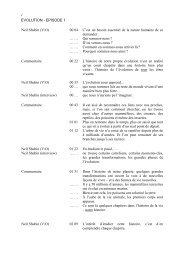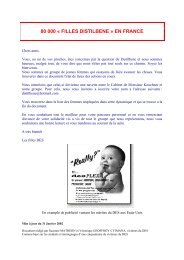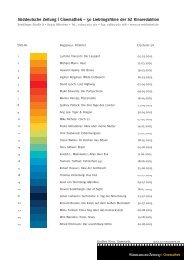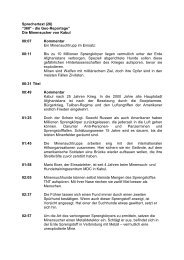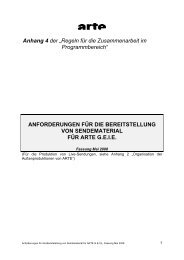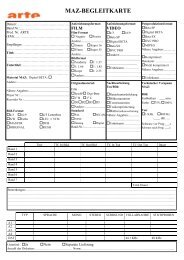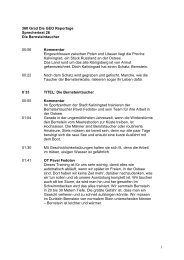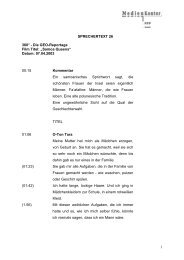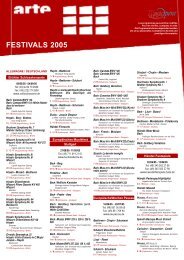POPs IN AFRICA HAZARDOUS WASTE TRADE 1980 - 2000 ... - Arte
POPs IN AFRICA HAZARDOUS WASTE TRADE 1980 - 2000 ... - Arte
POPs IN AFRICA HAZARDOUS WASTE TRADE 1980 - 2000 ... - Arte
Create successful ePaper yourself
Turn your PDF publications into a flip-book with our unique Google optimized e-Paper software.
talked to the Baden-Wuerttemberg state environment ministry<br />
and met with no opposition. It was not until the German Green<br />
Party published the protocol of a meeting of June 6, 1987, that<br />
the ministry dissociated itself from Blosch and called him<br />
untrustworthy. 1<br />
Scheme: Midco Toxic Waste Incinerator<br />
Date: 1989<br />
Type of Waste: Toxic<br />
Source: North America and Europe<br />
Exporter: Midco (UK)<br />
Pretext/Fate: Incineration<br />
Status: Unclear<br />
In May, 1989, Morocco’s leader, King Hassan II, rejected a plan<br />
by a British-based consortium, Midco, to construct “the largest<br />
toxic waste disposal plant in the world” on the western edge of<br />
the Moroccan Sahara. King Hassan rejected the scheme after a<br />
London newspaper, The Guardian, uncovered and reported the<br />
story on its front page. According to The Guardian, the planned<br />
toxic waste incinerator would burn up to 2,000 metric tons of<br />
North American and European waste each day.<br />
Claude Cornet, who left Midco because he was concerned about<br />
the abilities of Midco and Morocco to handle the waste, was<br />
delighted that the plan had been vetoed. Cornet stated, “There is<br />
a very sensitive Arab summit coming up to discuss the future of<br />
the Sahara, and The Guardian story on this project had caused<br />
the King considerable embarrassment. That is probably why he<br />
has moved so quickly to kill the scheme.” 132<br />
The issue appeared dead until it was raised again by journalists in<br />
the downwind Canary Islands in articles appearing in August<br />
1989. The articles assumed that the plant was still being<br />
planned. 133<br />
Mr. Benyahia from Morocco’s Department of the Environment<br />
told Greenpeace the Midco story was “not true” and promised to<br />
send a written statement which did not arrive so far. 134<br />
Obsolete Pesticides: In Morocco there are altogether 2,265 (2 thousand +) tonnes of<br />
obsolete pesticides stored in unnamed locations. A joint survey<br />
and risk assessment was carried out by a joint US-AID / GTZ<br />
team in 1991. Appraisal of options for disposal has been made,<br />
but were rejected by Morocco.<br />
The following substances were identified, among others: Endrin,<br />
DDT, Dieldrin, Heptachlor, Parathion. 135<br />
131German Green Party and Stuttgarter Zeitung, June 24 and 29, 1988.<br />
132Xinhua English Language News Service, May 2, 1989; The Guardian, (U.K.), May 16, 1989.<br />
133El Diario de las Palmas, August 11, 1989; The Guardian, May 15, 16, 1989.<br />
134 Personal conversation with Andreas Bernstorff, Jan 10, 2001 in Rabat, Morocco)<br />
135 FAO 1999<br />
70



